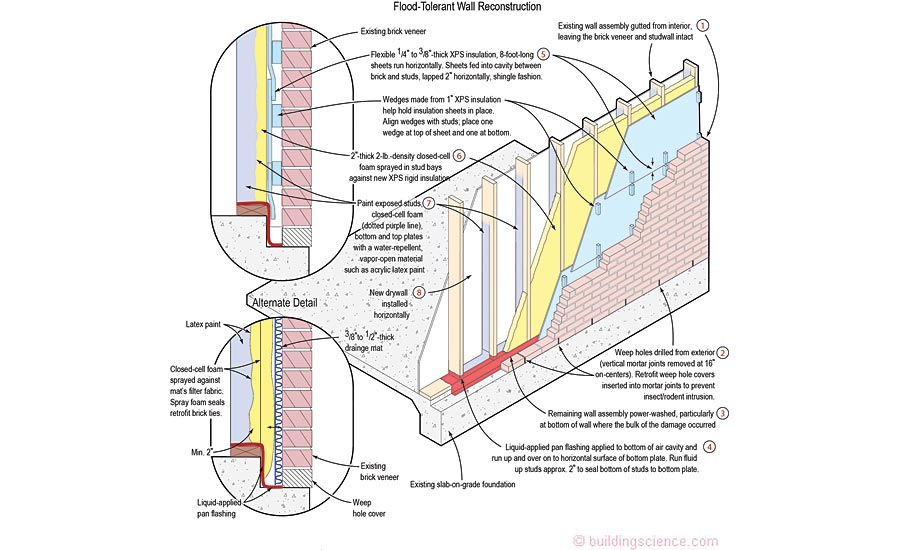Fewer skilled tradesmen, less available energy, tighter build schedules, fewer quality checks and less concern with building envelope performance are off-set by the demand for more energy efficient designs, more resilient assemblies and more productivity. An unintended consequence of “do more with less” thinking is often the loss of innovation. This is far from the truth when it comes to spray applied polyurethane foam insulation.
“Innovation is the creation and delivery of new customer value in the marketplace.” — Michael J. Gelb, “Innovate Like Edison: The Success System of America’s Greatest Inventor.”
I’ve observed over the past 35 years in the SPF industry that there are two drivers to Innovation: those being—as Gelb points out—customer demand and regulatory demand. Our industry is experiencing unprecedented levels of innovation within every aspect of the product chain, from chemical formulation development to in-field quality assurance. Altogether, these innovations will make SPF more affordable for the masses, drive demand and create more employment opportunities for skilled and unskilled labor.
Innovative Products
Each state is now implementing legislation to eliminate the use of high global warming potential materials in support of the EPA Clean Air Act and the SNAP program’s Rule 21 and 22. Several states, including California, Washington and Vermont, have already passed legislation prohibiting the use of high GWP materials. The development of new SPF formulations to exceed existing or pending Global Warming legislation has resulted in products with improved R-values, substantially reduced environmental impact and a whole new breed of “high lift” foams.
Innovative Application
The challenge for more resilient building enclosures is being met with SPF. Extreme weather events, including extended exposure to flood waters, has yielded specific FEMA approved wall designs and sustained high wind resistant designs include the use of closed cell foam as roof sheathing bonding agents—with the added benefit of providing exceptional insulation in a single product.
As building enclosure components trend towards the delivery of modular construction, SPF plays a significant role in providing high performance insulation applied to the back of concrete and other cladding systems installed in a factory setting. This approach eliminates field-installed environmental variance and ensures consistent quality and performance. In residential applications, closed-cell foam also adds significant structural integrity to wood framed assemblies. In-plant modular construction using wood and steel frame construction techniques see a big benefit to closed-cell SPF in speed of assembly and reduced transportation related repair costs.

In commercial construction, these new foams are being applied directly to the back of installed cladding panels eliminating the spray foam installers exposure to the elements during construction. These foams exceed the requirements of NFPA 285 and may replace the need for additional in-organic firestopping at the slab edge.
Radon, the second leading cause of lung cancer in America, and other soil gasses can be stopped from entering the home by using closed-cell SPF below the foundation slab.
In addition to providing an insulated foundation floor slab, innovative development engineers have determined some formulations can provide soil gas protection when installed in accordance with manufacturers’ guidelines. Radon gas testing and approvals are limited to those products and manufacturers who have tested and passed the appropriate protocol. Not all manufacturers or products carry the appropriate approvals.
Innovative Training
Innovation extends to the installation process through extensive training programs and in-field quality assurance. Reducing project risk and liability can be achieved by incorporating (and holding) the requirement for trained and skilled labor along with periodic inspections. Trade associations, such as the Spray Polyurethane Foam Alliance and the Air Barrier Association of America, have in recent years developed intensive SPF installer certification programs focusing on safety, installation technique, and in-field quality verification testing. Leading manufacturers have created training programs specific to their product line and individual corporate standards. Each can be easily incorporated into project specifications along with other proof documents to ensure the design and execution team of a superior SPF application.

Innovative Access
The Division 7 binder in the library has been replaced with online, 24/7 access to drawings and details, approval documents, guide specifications and technical data sheets, for most products and brands currently available. SPF education is now available online and provides valuable CEU credit opportunities. Face-to-face education and project discussions involving SPF manufacturers are now commonplace. There is now no reason to question the capability of SPF or draw a conclusion in a vacuum when it comes to “should I or shouldn’t I”—the answers are at your fingertips.
As spray applied polyurethane foam insulation use continues to grow, innovation on all fronts will ensure these products rightful place. The industry has demonstrated its resolve to provide an exceptional customer experience whether during the design phase or installation. Spray foam manufacturers and its industry will continue to meet the challenges of tomorrow, today.









